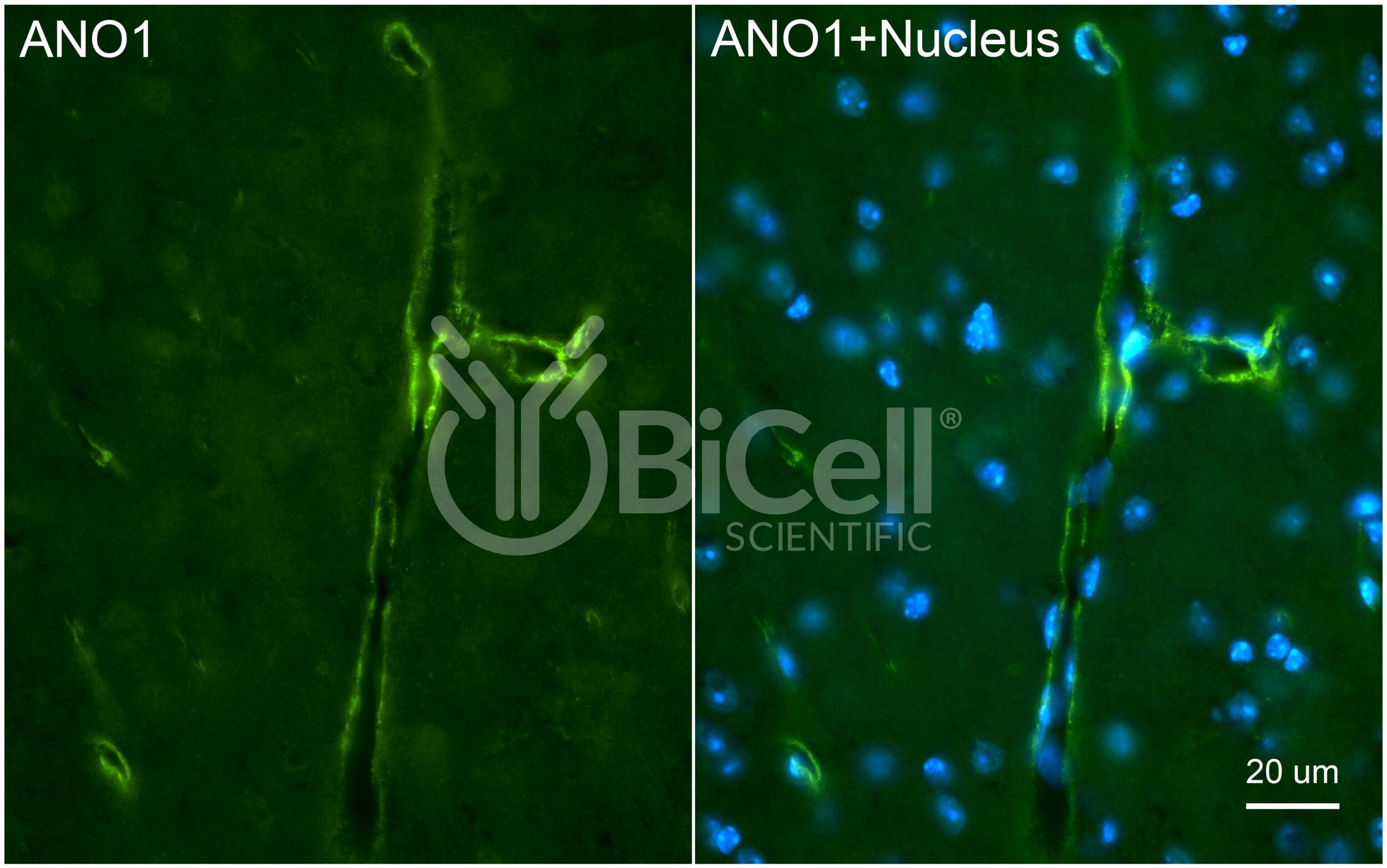Anoctamin-1 (ANO1 or TMEM16A) (C-Terminus) Antibody
Catalog-Number:
20530
Storage
-20°C
Description
Anti-Anoctamin-1 (ANO1 or TMEM16A) (C-terminus) antibody is validated on mouse tissue and recommended for immunofluorescence labeling, IHC, or western blot of materials from rodent tissues. Anoctamin-1 (ANO1), also known as Transmembrane member 16A (TMEM16A), is a voltage-gated calcium-activated anion channel, that is encoded by the ANO1 gene in human. Anoctamin-1 is expressed in the gastrointestinal tract and is highly expressed in interstitial cells of Cajal, where it plays an important role in pacemaker activity, neurotransduction of enteric motor neurotransmitters and regulation of gastrointestinal motility.
| Application: | Immunofluorescence, Immunohistochemistry, Western Blot |
|---|---|
| Clonality: | Polyclonal |
| Concentration: | 0.25 mg/ml |
| Conjugation: | Unconjugated |
| Host: | Rat |
| Immunogen: | Synthetic peptide (14-aa) derived from the C-terminal cytoplasmic region of mouse Anoctamin-1 protein |
| Isotype: | IgG |
| Purification: | Affinity Chromatography |
| Reactivity: | Mouse, Rat |
| Species Homology: | Synthetic peptide sequence is identical to rat sequence (showing 64.3% homology to human sequence) |
| Storage: | -20°C |
| Storage Buffer: | PBS, pH 7.2, 0.1% Sodium Azide |


